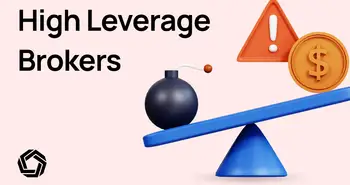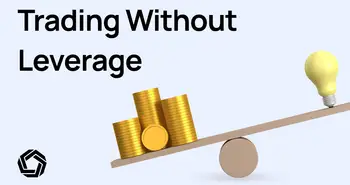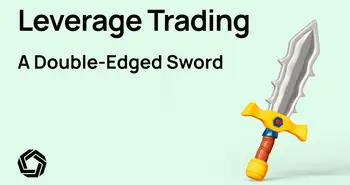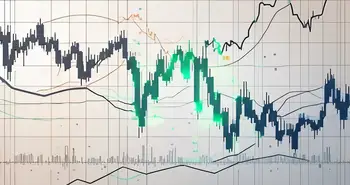Everything You Need to Know on Forex Leverage

Forex leverage is an essential tool for traders looking to amplify their potential profits in the financial markets. It allows you to control larger positions with a smaller initial investment, giving you greater exposure and the opportunity to take advantage of market movements. However, with increased opportunity comes increased risk, and understanding how leverage works is crucial to avoid costly mistakes. In this comprehensive guide, we will delve into the world of forex leverage, covering everything from its definition and role in trading to its benefits, risks, and effective strategies. So, let's kick off by exploring the basics of forex leverage.
Understanding the Basics of Forex Leverage
Before diving into the complex world of forex leverage, it's essential to grasp its fundamental concepts. So, what exactly is forex leverage? In simple terms, leverage is a financial tool that enables traders to control a more substantial amount of capital than they have available. It involves borrowing funds from a broker to open and maintain trading positions. The leverage ratio determines the amount of borrowed funds relative to your initial capital. For example, a leverage ratio of 1:100 means that for every $1 you have, you can control $100 in the market.
Definition of Forex Leverage
Forex leverage can be defined as the ratio between the trader's capital and the amount of borrowed funds provided by the broker. It magnifies both potential profits and losses, significantly increasing the returns on successful trades but also heightening the risk of losses. Leverage allows traders to amplify their market exposure, potentially capitalizing on even the smallest price movements.
The Role of Leverage in Forex Trading
Now that we understand the definition of forex leverage let's explore its role in forex trading. Leverage empowers traders to take larger positions in the market, providing the potential for more substantial profits. It allows you to trade with a fraction of the total trade value, known as margin, rather than using your entire capital. This can be especially advantageous for retail traders with limited resources, as it offers the opportunity to access the forex market with smaller initial investments.
The Benefits and Risks of Using Leverage in Forex
As with any trading tool, there are both advantages and disadvantages to using leverage in forex. Let's start by examining the benefits it provides:
Advantages of Using Leverage
1. Increased Market Exposure: Forex leverage allows traders to control larger positions, giving them enhanced market exposure and potentially higher profits.
2. Capital Efficiency: By using leverage, traders can maximize their capital efficiency as they can open larger positions with a smaller amount of initial investment.
3. Diversification: Leverage enables traders to engage in multiple trading opportunities simultaneously, spreading their risks across different markets.
While leverage offers several advantages, it is essential to recognize and manage the risks involved:
Potential Downsides and Risks
1. Magnified Losses: Leverage not only amplifies your potential profits but also your losses. A small adverse market movement can wipe out your entire capital if you're not careful. Risk management is, therefore, crucial when utilizing leverage.
2. Margin Calls: If your trade moves against you, your broker may issue a margin call, requiring you to provide additional funds to maintain your position. Failure to meet a margin call may result in the automatic closure of your trade.
3. Psychological Pressure: Trading with leverage can induce psychological pressure, as the potential for heightened profits may increase impulsivity and emotional decision-making. Staying disciplined and following a well-defined trading plan is paramount.
How to Calculate Forex Leverage
Now that we've covered the basics and explored the benefits and risks, let's delve into the calculation of forex leverage. To understand leverage fully, you need to grasp the concepts of margin and leverage ratio. These play a crucial role in determining the amount of leverage you can utilize.
Understanding Margin and Leverage Ratio
Margin refers to the collateral you are required to deposit with your broker to open and maintain a leveraged position. It acts as a guarantee against potential losses that may exceed your initial investment. The leverage ratio, on the other hand, represents the magnitude of leverage your broker is willing to provide.
Calculating Leverage in Forex
To calculate forex leverage, you can use the following formula:
Leverage = Total Position Size ÷ Equity
For example, if you have a $10,000 trading account and open a position worth $100,000, your leverage would be calculated as follows:
Leverage = $100,000 ÷ $10,000 = 10:1
This means you are utilizing a leverage ratio of 10:1, where every dollar in your trading account allows you to control $10 in the market.
Strategies for Using Forex Leverage Effectively
Using leverage effectively requires careful consideration and adherence to sound trading strategies. Here are two key strategies to help you make the most of forex leverage:
Choosing the Right Leverage Ratio
Choosing the appropriate leverage ratio is crucial. It is essential to assess your risk tolerance, trading style, and level of experience. A conservative approach may involve using lower leverage ratios, while more experienced traders with a higher risk appetite may opt for higher ratios. Remember, higher leverage also means higher potential losses, so it's essential to strike a balance that aligns with your risk management plan.
Risk Management in Leveraged Trading
Effective risk management is paramount when using forex leverage. Some key risk management principles to consider include:
– Setting appropriate stop-loss orders to limit potential losses
– Diversifying your positions to spread risk
– Regularly monitoring your positions and adjusting stop-loss levels accordingly
– Consistently following your trading plan and avoiding impulsive decisions
By incorporating these strategies into your trading approach, you can harness the power of leverage while mitigating potential risks.
Common Mistakes in Using Forex Leverage
While leverage can be a powerful tool, it is essential to be aware of common pitfalls that traders often fall into when utilizing it. Let's explore two of the most prevalent mistakes:
Overleveraging and Its Consequences
Overleveraging occurs when traders utilize excessively high leverage ratios, risking a substantial portion of their capital on a single trade. While this approach may yield significant profits, it can also lead to disastrous losses. It is crucial to adopt a prudent approach and carefully manage the leverage ratio to avoid overexposure.
Ignoring Margin Calls
Margin calls are warnings that your account's margin level has fallen below the required threshold. Ignoring these warnings and failing to provide additional funds when necessary can result in forced liquidation of your positions and potential losses. Regularly monitor your account and be prepared to address margin calls promptly.
As an experienced trader, I understand the allure of forex leverage and the potential it offers. However, I also recognize the need for caution and disciplined risk management to avoid unnecessary pitfalls. Remember, successful trading involves a balance between harnessing the advantages of leverage and protecting your capital.
FAQ – Frequently Asked Questions
1. What is forex leverage?
Forex leverage is a financial tool that allows traders to control positions larger than their initial capital by borrowing funds from a broker.
2. How does leverage work in forex trading?
Leverage enables traders to open positions of higher value than their available capital. It magnifies both potential profits and losses.
3. What are the benefits of using forex leverage?
Forex leverage offers increased market exposure, capital efficiency, and the ability to diversify trading opportunities.
4. What are the risks associated with forex leverage?
Using leverage amplifies potential losses, can lead to margin calls, and puts traders under psychological pressure that may lead to impulsive decision-making.
5. How do I calculate my forex leverage?
To calculate your forex leverage, divide your total position size by your equity. The resulting ratio represents your leverage.
6. How can I use leverage effectively in my trading strategy?
Effective use of leverage involves choosing the right leverage ratio based on your risk tolerance and implementing robust risk management strategies.
7. What are some common mistakes to avoid when using forex leverage?
Two common mistakes to avoid are overleveraging and ignoring margin calls. Overexposing your capital and neglecting margin requirements can lead to significant losses.
By understanding the intricacies of forex leverage and approaching it with a well-defined strategy, you can navigate the markets more effectively and potentially capitalize on profitable trading opportunities while safeguarding your capital.
Ready to take your forex trading to the next level with the advantages of leverage? Look no further than Morpher, the innovative trading platform that's redefining the investment landscape. Experience the freedom of zero fees, infinite liquidity, and the flexibility of fractional investing and short selling. With Morpher, you're not just trading; you're joining a revolution that empowers you with up to 10x leverage, enhancing your trading potential while maintaining control and safety over your funds. Embrace a unique trading experience with Morpher's Virtual Futures on the Ethereum Blockchain. Sign Up and Get Your Free Sign Up Bonus today, and be part of the future of trading with Morpher.

Disclaimer: All investments involve risk, and the past performance of a security, industry, sector, market, financial product, trading strategy, or individual’s trading does not guarantee future results or returns. Investors are fully responsible for any investment decisions they make. Such decisions should be based solely on an evaluation of their financial circumstances, investment objectives, risk tolerance, and liquidity needs. This post does not constitute investment advice.

Painless trading for everyone
Hundreds of markets all in one place - Apple, Bitcoin, Gold, Watches, NFTs, Sneakers and so much more.

Painless trading for everyone
Hundreds of markets all in one place - Apple, Bitcoin, Gold, Watches, NFTs, Sneakers and so much more.









